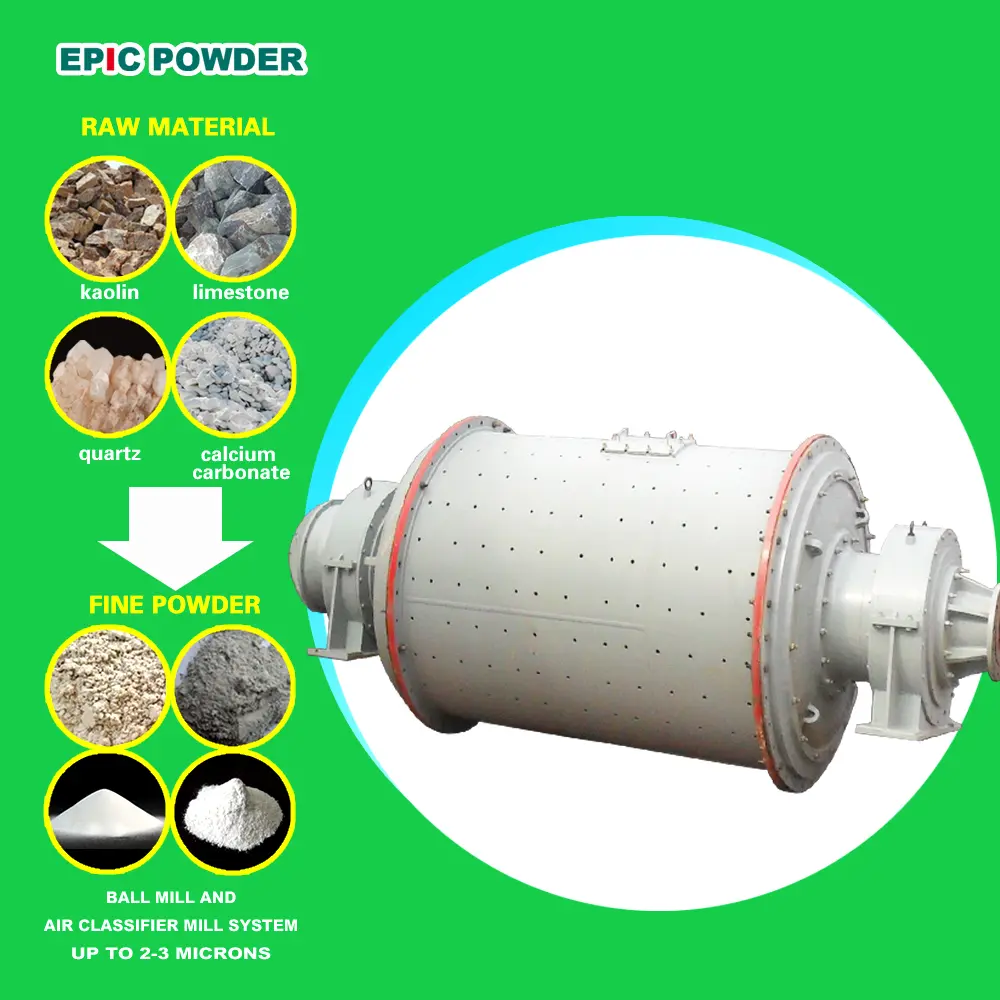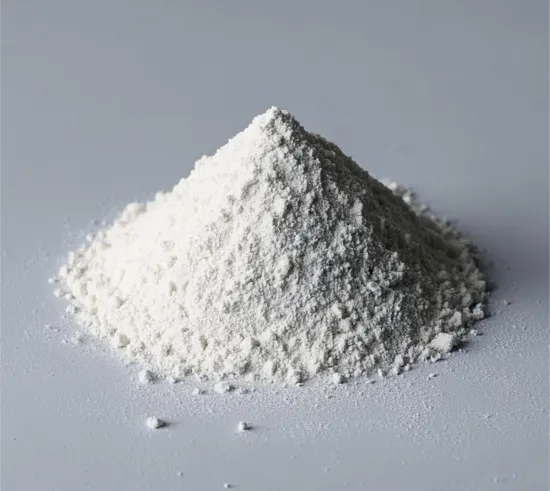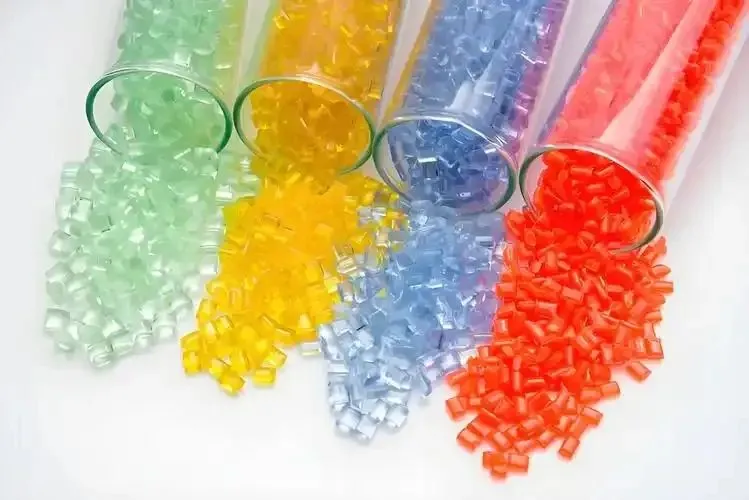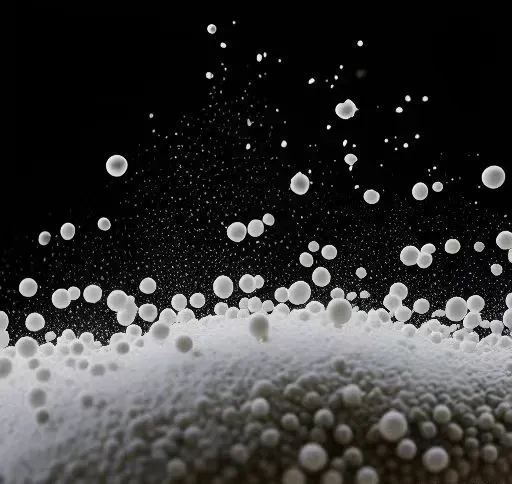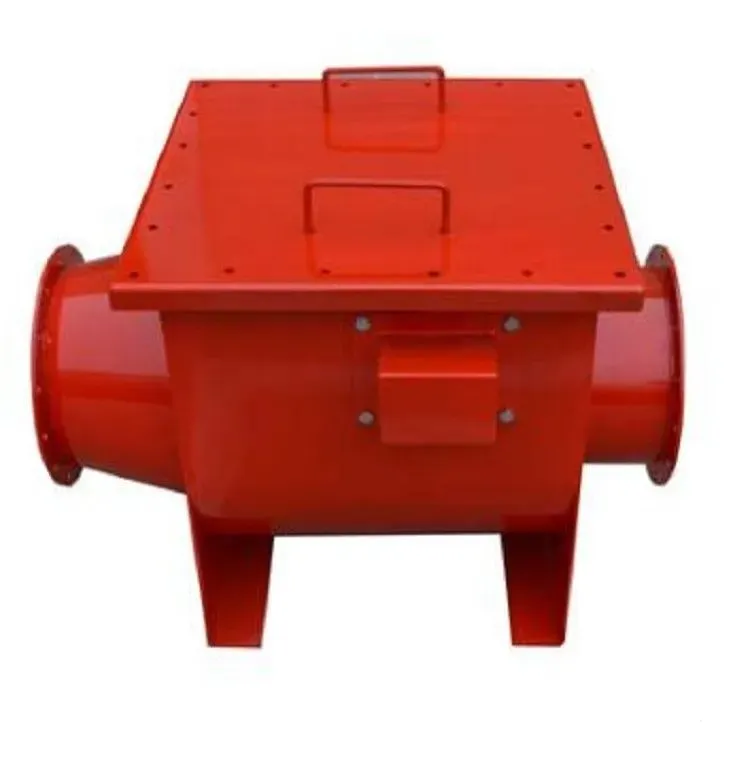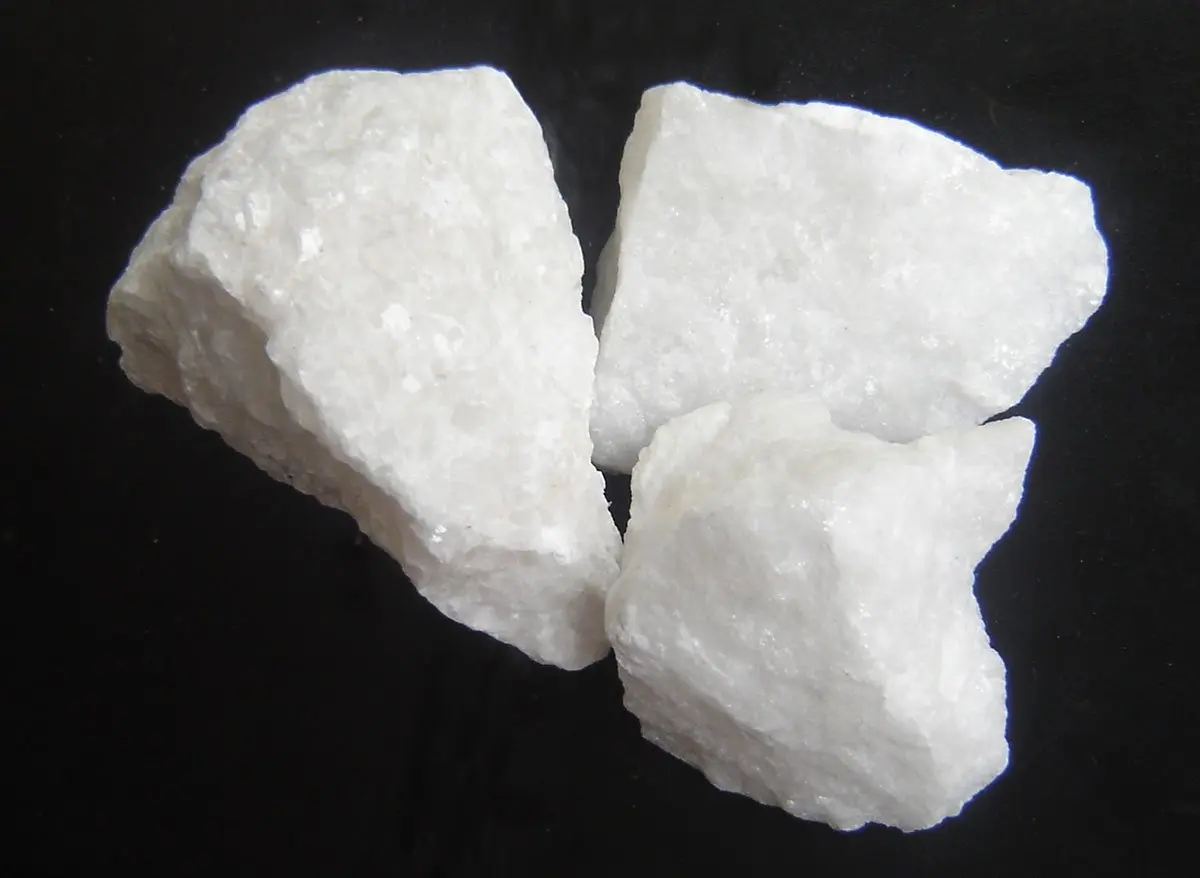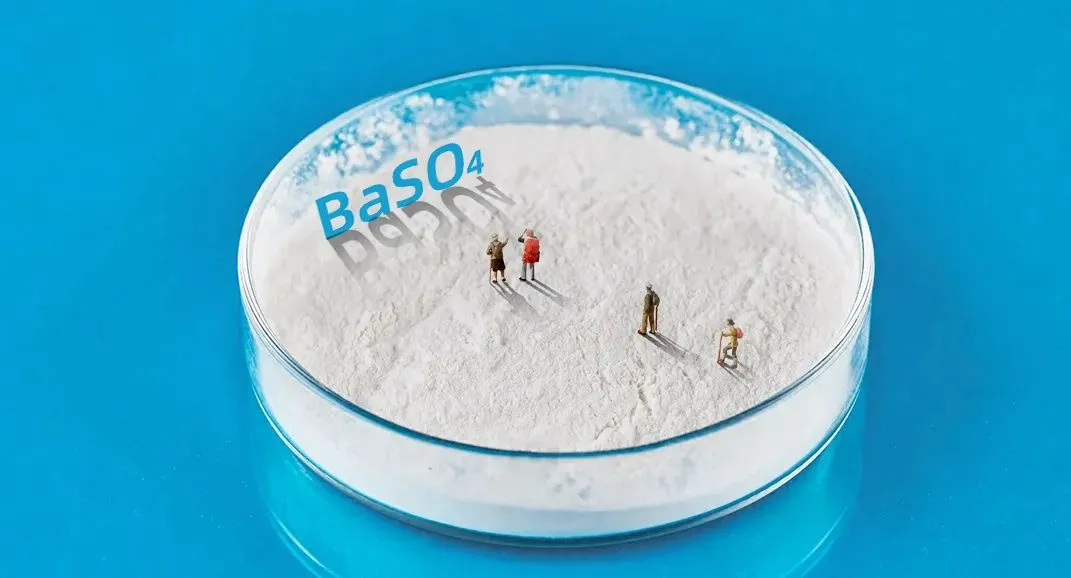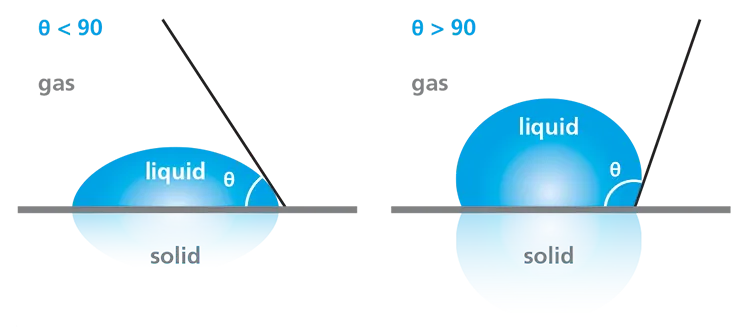Powder feeding equipment is a key component used to accurately and evenly transport powder materials in the production process. It is an indispensable and important part of the silo system and also functions as mechanical equipment for transporting materials over short distances. Depending on the purpose of use, it is also referred to as a feeder, discharge feeder, or discharger. Typically, it is installed at the discharge port of the silo, relying on the gravity of the material and the mechanical action of the feeding equipment’s working mechanism to discharge the material from the silo and feed it continuously and evenly to the next piece of equipment.
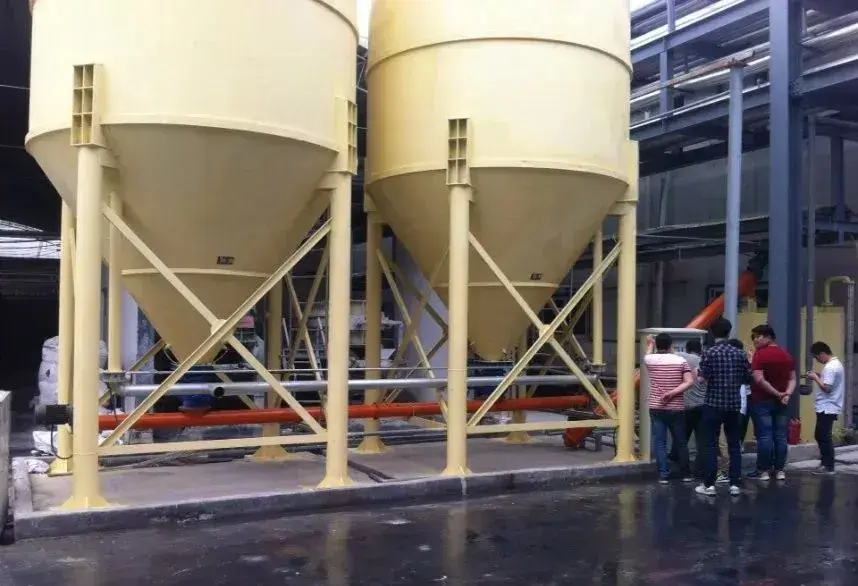
The key performance characteristic of feeding equipment is its ability to control material flow, thus providing accurate and consistent feeding. Additionally, when the feeder stops working, it can serve as a locking mechanism for the silo. Therefore, it is an essential piece of equipment in continuous production processes.
Powder feeding equipment can be classified into several types based on different application scenarios and working principles. Below are some common types of powder feeding equipment, along with their characteristics and applications:
1. Belt Feeder
Principle: The powder material is transported from the feed port to the discharge port through the movement of the belt. A belt feeder is essentially a short belt conveyor, which can be installed either horizontally or at an incline. Compared to ordinary belt conveyors, belt feeders have the following characteristics: the supporting rollers in the load-bearing section are arranged more closely, and the unloaded section usually lacks rollers. Additionally, there are stationary fences on both sides of the belt, and the belt speed is relatively low.
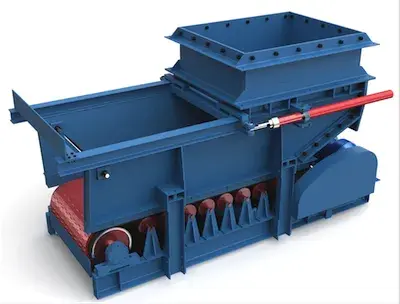
Features:
- Long conveying distance, suitable for large flows of powder materials.
- Relatively simple structure, low investment, and reliable operation.
- Low power consumption during stable operation.
- Good material flow control and adjustment capabilities, with automatic control and metering options available.
- However, it requires a large amount of space, and the belt is prone to wear. As a result, it is not suitable for abrasive or high-temperature materials.
Application: Mainly used for transporting granular and small block materials, and less commonly used for medium-sized block materials. It is commonly employed in the transportation of bulk materials such as coal, ore, sand, and gravel.
2. Plate Feeder
The plate feeder is suitable for bulk materials or applications where the temperature exceeds 70°C. Like the belt feeder, it can be installed horizontally or at an incline, with the tilt angle typically greater than that of the belt feeder. The load-bearing plate is positioned parallel to the direction of the chain, rather than perpendicular as in other feeders. For light and medium-sized plate feeders, roller chains are usually used, running along fixed tracks. In heavy-duty plate feeders, fixed supporting rollers are used, and the chain plates run along these rollers.
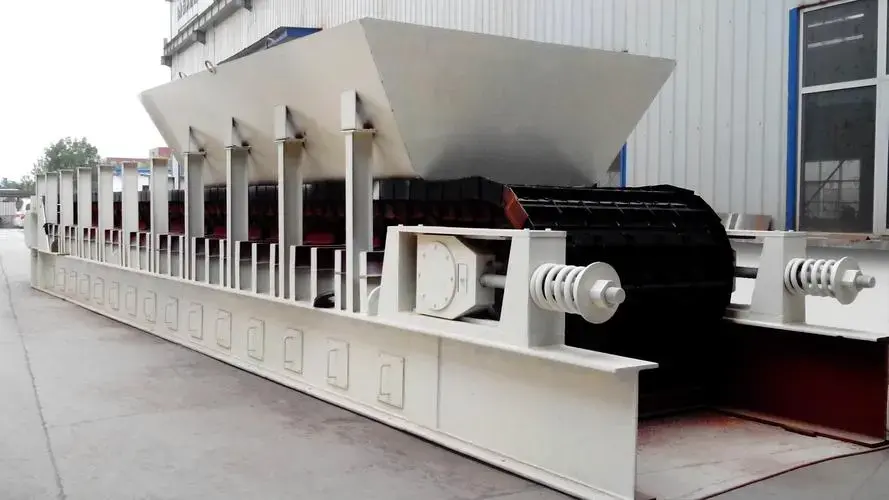
Features:
- Strong structure, capable of withstanding high pressure and impact.
- Can handle large and hot materials.
- High reliability, ensuring relatively uniform feeding.
- However, the plate feeder has a complex structure, is heavy, and has high manufacturing costs.
- Not suitable for conveying powdered materials.
Application:
Suitable for feeding and conveying large, abrasive, heavy, and hot materials.
3. Rotary Valve (Impeller) Feeder
The powder material is conveyed from the feed port to the discharge port through rotating blades. The rotary valve (impeller) feeder consists of a shell that can be connected to the silo receiving equipment, with an impeller rotor located in the middle. The rotor is driven by a separate motor via a sprocket. When the rotor is stationary, material cannot flow out. When the rotor rotates, material is discharged along with the rotor’s motion.
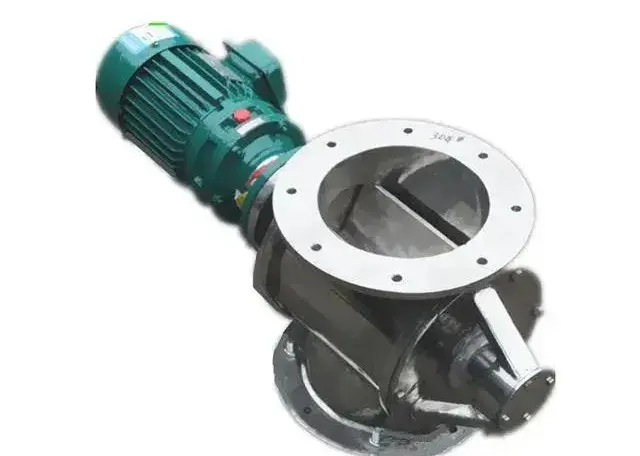
Features:
- Simple structure and easy maintenance.
- Suitable for powder materials with good fluidity.
Application:
Widely used in industries such as chemical, food, pharmaceutical, and others.
4. Screw Feeder
The powder material is pushed forward by the rotation of a spiral blade. Compared to a general screw conveyor, the screw feeder has smaller pitch and length, no intermediate bearings, and a tubular material trough (instead of the U-shaped trough found in conveyors). The spiral shaft is supported in bearings at both ends outside the tube, and the material filling coefficient is large, typically ranging from 0.8 to 0.9. There are two types of screw feeders: single-tube and double-tube.
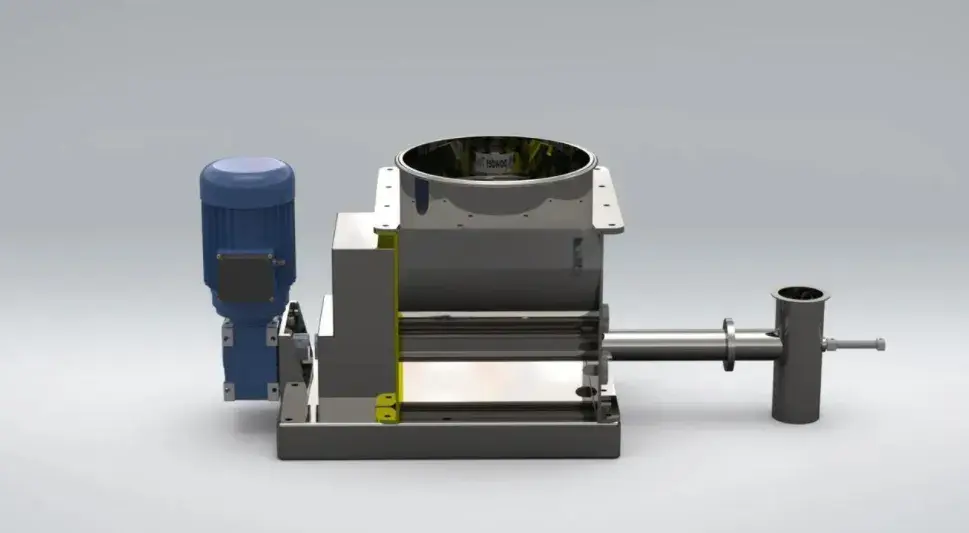
Features:
- Can achieve continuous and quantitative feeding.
- Suitable for powder materials of various particle sizes and viscosities.
- The screw feeder is sealed; however, the working parts experience significant wear, so it is best suited for powder materials that are not fragile, have low abrasiveness, and are easy to flow.
- It is typically installed horizontally or at an inclination of up to 30 degrees.
- The general length is 1-2 meters, and the production capacity ranges from 2.5 to 3.0 cubic meters per hour.
- The feeding amount can be adjusted by changing the screw speed.
5. Disc Feeder
The disc feeder is commonly used for feeding powder and granular materials. The material is evenly and continuously transported to subsequent process equipment through a rotating disc.
The disc feeder primarily consists of a motor, reducer, disc, scraper, and hopper. During operation, the motor drives the disc to rotate through the reducer, and the material enters the disc surface from the hopper. The rotation of the disc ensures that the material is evenly scraped and delivered to the discharge port for continuous feeding.
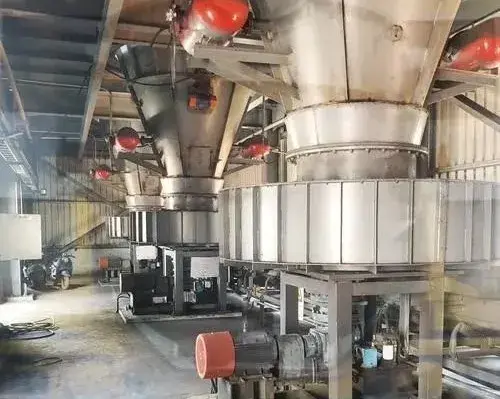
Features:
- Simple structure, reliable operation, and easy adjustment.
- Large range of production capacity adjustment.
- The amount of material fed can be controlled with greater accuracy.
- However, due to volume measurement, there is generally an error of about 5%.
- The disc feeder has almost no conveying distance for the material, which may make it unsuitable for certain practical layouts.
Application:
- Suitable for feeding various non-sticky materials, with a particle size generally not exceeding 80mm.
- Not suitable for powder materials with particularly good fluidity, as it may cause material channeling.
6. Vibration Feeder
The powder material is transported from the feed port to the discharge port by vibration. Based on the motion state of the trough and the material, the vibrating feeder can be divided into two types: inertial type and vibrating type. In the inertial vibrating feeder, the material remains in contact with the bottom of the trough at all times due to inertial force and slides along the bottom of the trough. In the vibrating feeder, the material is separated from the bottom of the trough by inertial force, is thrown upward, and “jumps” in the trough.
The difference between the two types lies in the acceleration components. In the inertial trough, the vertical component of acceleration is less than the free fall acceleration, and the material remains in contact with the bottom of the trough. In the vibrating trough, the vertical component of acceleration exceeds the free fall acceleration, causing the material to “jump” along the bottom of the trough.
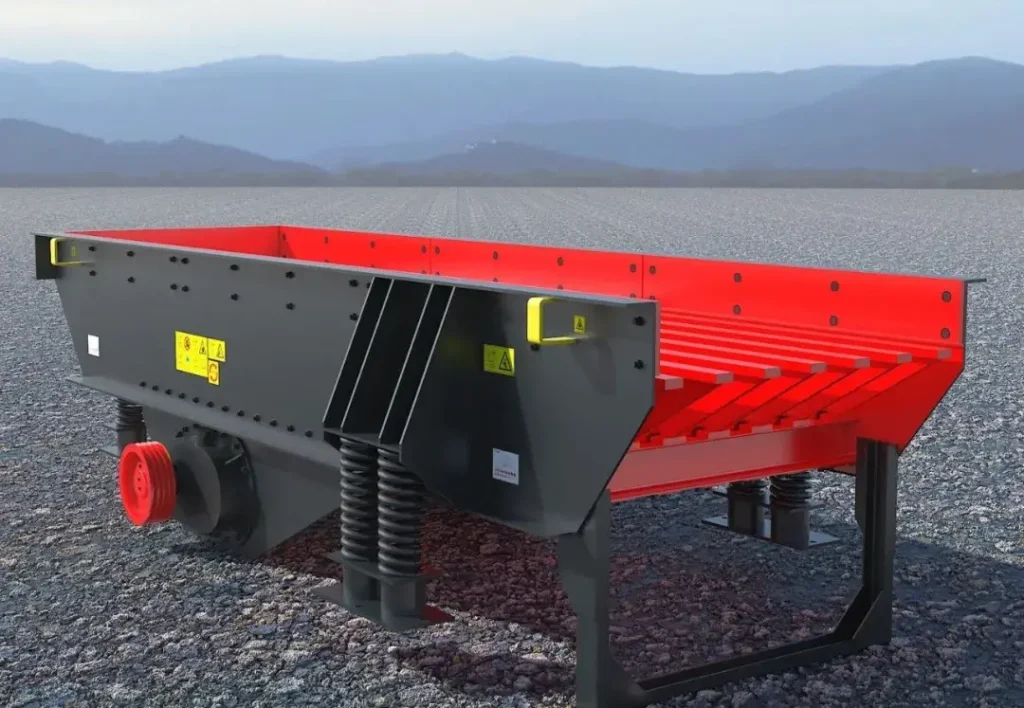
Features:
- Compact structure with no mechanical wear.
- Suitable for fine powders and materials prone to agglomeration.
Application:
Widely used in industries such as mining, metallurgy, building materials, and others.
Conclusion
Powder feeding equipment plays a crucial role in ensuring the accurate, efficient, and continuous transport of powder and granular materials within production processes. By selecting the appropriate feeding system based on material characteristics and application requirements, manufacturers can improve operational efficiency, reduce downtime, and ensure consistent material flow. Understanding the various types of powder feeding equipment and their applications allows for optimized system design and performance in a wide range of industries.

